
Background information
"Tales of Xillia Remastered": my unforgettable introduction to the "Tales" series
by Kevin Hofer

Miniatur Wonderland in Hamburg boasts precise detail and the perfect illusion. But the world on a 1:87 scale highlights both what’s there and what’s missing. I go in search for clues between the race track, rainbow flag and reality.
I got my first model car when I was four years old. It travelled for hours through my fantasy world: over books, under chairs, past Playmobil figures and Lego houses I’d built. Now, decades later, I’m standing in front of the miniature version of Monaco and the feeling of amazement is back. Childlike joy. The urge to take a closer look – but this time with a critical eye.
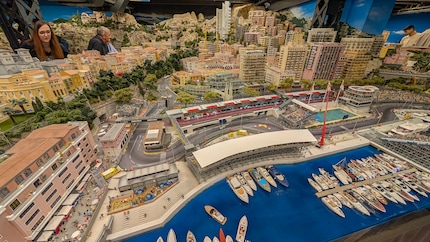
Monaco is spectacular. The Formula 1 track winds its way through narrow streets, the crowd cheers, the water glistens in the harbour. In the midst of it all, high-speed cars compete in a driverless race. The team at Miniatur Wonderland in Hamburg spent eleven years tinkering with the system. Specially manufactured circuit boards enable the computer to locate each vehicle precisely. This is how it controls specific and unique overtaking manoeuvres and pit stops. The race looks deceptively real.
A few steps further on and you’re in Rio de Janeiro, featuring a favela slope, Copacabana and the carnival. Everything moves, everything seems alive. These sections are the newest additions to Miniatur Wonderland. Immediately noticeable are the increased details, more dynamics and upped amazement. No wonder given how gigantic the miniature world is. More than 1,200 trains run on over 1,600 square metres, with over 11,000 vehicles and 290,000 figures moving around. More than 400 staff members have invested over 1.2 million hours in the construction and continuous expansion over 24 years.
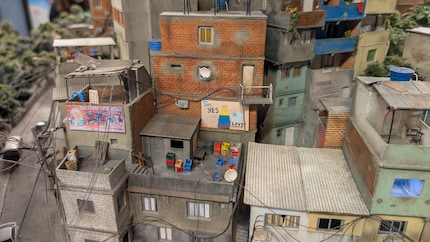
But how much reality does this miniature world really show? I went through the exhibition with a different perspective, looking at who’s visible and who isn’t. Are there people with disabilities? Queer couples? People of colour? Scenes that not only show idylls but also social or political tension?
I searched and occasionally discovered something: a person in a wheelchair on a bridge with stairs. A rainbow flag on a balcony. A banner to save the glaciers. But measured against the size and diversity of the model world, such scenes remain rare. The world is colourful, but conspicuously standardised.
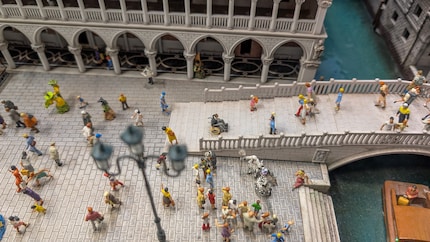
Niklas Weissleder, press spokesperson for Miniatur Wonderland, says: «We endeavour to depict all people. But we’re often limited by the range of figures available.» The team creates some of the characters themselves, but many come batch produced. Rather than using a plan to decide which themes are presented, they develop ideas over time. Starting from one region, they build on it step by step.
You can clearly see the progress. Newer areas such as Monaco or Rio appear more elaborate, more detailed and bolder than older areas such as Switzerland and the fictional town of Knuffingen. Evidently, our view of the world has also changed. However, this doesn’t create a true reflection of social reality – or only in fragments.
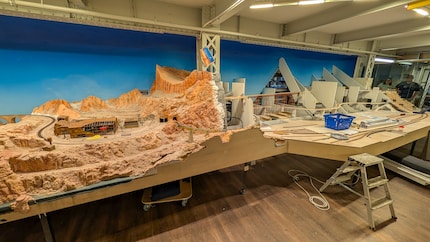
The very fact that so much is shown highlights the gaps all the more. Between tens of thousands of figures, hundreds of trains and countless details, it seems almost absurd how rarely you spot people with disabilities. Or queer couples. Or people of colour. Or scenes depicting poverty or social conflicts.
The clearest social commentary is in a side room rather than in the main exhibition itself. This special exhibit shows the same street corner in Berlin from the end of the war to reunification. A miniature journey through political upheavals. Or various dioramas of animal husbandry, from organic free-range to factory farming. It’s the only area of Wonderland that explicitly tells the story of history, change and social conflict. And perhaps it’s significant that these scenes aren’t part of the main world, but are instead tacked onto the side.
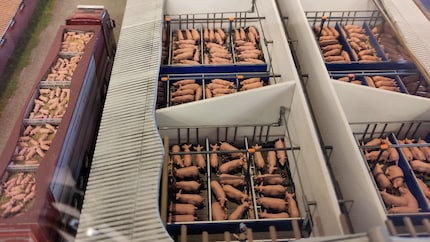
It makes me wonder: if model making creates so much reality, why not show this reality too?
The will to change is palpable. Even if a lot of statements from the press team remain general, it’s clear that they’d like diversity. However, the path to achieving this is laborious, fragmented and often limited by available resources and feasibility.
Perhaps this is precisely the crux of the matter. Whoever builds models decides what’s visible and what’s not. It’s not about politicising Wonderland, but about showing more of the world we all know. With everything that goes with it.
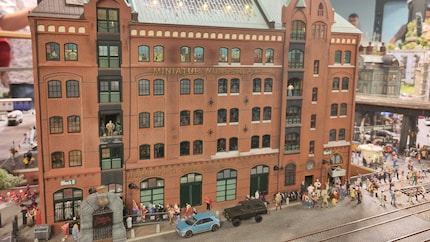
Miniatur Wonderland isn’t a political museum. It aims to inspire, amaze and awaken childhood memories. And they’ve succeeded in that. But precisely because this world is designed so precisely, so lovingly and with such attention to detail, the gaps stand out all the more. In a world that shows almost everything, why not include those who are often overlooked?
Maybe they need to zoom in at 1:87 scale to take another look. Something to ponder: if you were to build your own miniature world, who would you make visible?
I get paid to play with toys all day.
Interesting facts about products, behind-the-scenes looks at manufacturers and deep-dives on interesting people.
Show all
Background information
by Kevin Hofer

Background information
by Kim Muntinga

Background information
by Stefanie Lechthaler